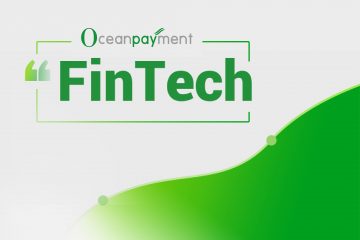Digitalization has progressed at a rapid pace and has quickly become part of our everyday lives. The fintech revolution is one of the most eminent examples of digital transformation, with various new concepts and products materializing every day. One such concept that is going strong and gaining immense popularity is embedded finance, where conventional businesses are integrating financial mechanisms into their overall business plan. This novel collaboration between technology providers, financial product distributors, and banks utilizing non-financial platforms is being dubbed the embedded finance revolution.
With $20 billion in revenues in the United States alone for the year 2021, according to a report by McKinsey, this article will shed more light on the consistently increasing popularity of embedded finance and why it is being hailed as the future of finance.
What is Embedded Finance?
In simple terms, embedded finance can be described as the utilization of financial services or products by a non-financial provider. These services and tools, such as lending or payment processing, which are traditionally availed through a bank, are integrated within the products or services of the non-financial provider.
Embedded finance helps in streamlining the financial processes for both customers and businesses by lowering the barriers to entry for different services and products. SMBs can now easily log into their accounting or e-commerce platforms where they can satisfy all their financial needs, without going to the bank. These platforms are not banks but software companies that are collaborating with banks and technology providers to integrate financial products into a single streamlined and convenient digital interface with which customers can interact on a daily basis. These include customer loyalty apps, accounting software, and shopping cart platforms. For both consumers and businesses that utilize these digital interfaces, the use of financial services becomes a part of their nonfinancial experience and has gained immense popularity because of this.
Banking as a Service (BaaS) Vs Embedded Finance
BaaS is the provision of banking services via digital channels as opposed to more conventional brick-and-mortar branches. The exponential growth of fintech companies and the need and demand for digital banking services has allowed BaaS to gain traction and popularity.
BaaS involves financial institutions offering products and services to businesses or brands. These companies in turn provide these financial services to their own clientele. Through BaaS solutions, platforms are providing companies with prebuilt infrastructure. This infrastructure can be used to develop applications and eCommerce modules. The integration of these modules eliminates the technical barriers in development and companies can focus on expanding their business prospects.
On the other hand, in embedded finance, the financial tools and services are embedded into the company’s primary product or service. As a result, businesses can provide financial services to their clients without the need for developing their own banking infrastructure.
Both BaaS and embedded finance also have different takes on branding. In embedded finance, the customer is aware that the financial solutions are provided by an external bank. On the other hand, in BaaS, the system supports the front-end provider with which the consumer has a direct interaction.
Similarly in both solutions differ in their approach to conversions, in BaaS, digital banking services are more in accordance with contemporary customers for online financing products, while embedded finance is focused more towards singular transactions. It supports conversions by allowing the provider to keep their consumers connected to the business up until the deal is closed.
How Does Embedded Finance Work?
In embedded finance, platforms are utilized to offer financial products and services to customers from the same dashboard that they are using for their daily workings. The platform is the foundation of the consumer’s operations and can serve as their bank as well by providing services such as:
- Business financing, a service that can be offered and approved on the spot
- Bank accounts that can assist in finance management by streamlining operations
- Issuance of cards to ensure faster payouts
Trends and Examples of Embedded Finance
In terms of fintech, embedded finance will lead the way in 2023. Non-financial organizations should consider ways to shorten the customer process with one-stop, embedded finance solutions in light of today’s modern, impatient consumer.
Embedded Payments
When payment functionality is included in a non-payment application or service, it is referred to as an embedded payment. This allows users to make payments without ever having to leave the app or website they are presently using.
Purchasing items on the website of a retailer or on a mobile app without the need for visiting an external checkout page is an example of embedded payments. Subscription-based payments such as those for monthly subscriptions for services such as Netflix are also an example embedded payments. Services such as ride-hailing, on-demand delivery, and food deliveries can also be availed via embedded payment solutions.
The scope of embedded payments is continuing to expand at an aggressive rate. Innovative solutions are pushing the barriers of embedded payments and offering new possibilities to consumers. Brands like Amazon have already experimented with Amazon Go, a cashless grocery store. Customers can simply pick up their desired items and walk out of the store. The embedded payment technology handles invoicing and payment management to simplify the process.
Branded Payment Cards
Payment cards that carry the branded name of a non-financial company, such as an airline, hotel, or retail company but are issued by a financial organisation, such as a bank, are referred to as co-branded credit cards. Credit cards, debit cards, prepaid cards, and charge cards are all examples of branded payment cards.
These cards often provide rewards or advantages unique to the business whose name is on the card. These can include hotel points, frequent flyer miles, or cashback on purchases. Both the financial institution and the non-financial organization may benefit from branded payment cards. The former can draw in new clients and boost sales through card use, whilst the latter can draw in new clients and boost brand loyalty by providing rewards and advantages tailored to its goods and services.
Embedded lending
A non-lending-specific software or service is integrated with lending solutions through embedded lending. Similar to the smooth experience provided by embedded payments, this form of embedded financing enables clients to apply for and receive loans without having to leave the app or website. ‘Buy now, pay later’ (BNPL) options are one of the most popular styles of embedded lending. This is when online retailers offer “buy now, pay later” options built into the online checkout page, allowing clients to pay in regular installments over a specified period of time with no interest.
Embedded lending can help firms generate new revenue streams while improving customer access to credit. This is especially true for the underbanked and unbanked population, who can find it more difficult to access conventional loan sources like banks or credit unions. Intuitive lending solutions like Kabbage are improving funding access for small businesses by tapping into data. The platform evaluates sales data from companies to automatically access viability for funding. Subsequently, the funds are directly deposited into the company’s accounts. In the BNPL space, companies like Klarna are pushing the envelope with convenient solutions for retail consumers. The broader integration of these solutions will result in customer loyalty and increased retention. Businesses will also benefit from lean funding and support solutions.
1. Embedded insurance
Embedded insurance enables businesses in non-insurance sectors to provide insurance protection to their clients, including health, life, property, and casualty insurance, without having to create an entire insurance infrastructure from start.
This particular form of embedded finance focuses on the incorporation of insurance services and products into non-insurance goods and services, like mobile apps, social media platforms, and e-commerce websites. Embedded insurance can offer firms greater data insights, expense savings, and a quicker time to market.
2. Benefits of Embedded Finance for Businesses
Embedded finance has a wide variety of advantages for businesses, including:
- Creating new revenue streams
- Enhancing customer loyalty
- Cost cutting
- Improved customer experience
- Greater data insights
Conclusion – Embedded Finance with Oceanpayment
Embedded consumer finance is a trend that is affecting a wide variety of sectors, including healthcare and e-commerce. From B2B markets, ride-sharing apps like Uber, and a variety of other services, embedded finance looks all set to be the future for the fintech sector. Businesses should integrate embedded finance services into their products. This will increase the competitiveness of the brand, and increase revenue and customer engagement as well.
Oceanpayment is playing a crucial part in the current market where retailers can provide their products to a larger and more varied consumer base. Currently, millions of e-commerce merchants in more than 200 countries and regions are able to expand and extend their reach in the worldwide market thanks to our portfolio of customisable payment processing solutions and services. Oceanpayment aims to offer clients the best payment gateway and digital payment processing company solution that caters to their business demands.
















Comments are closed.